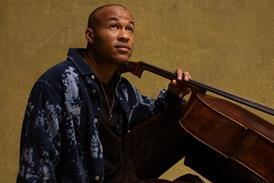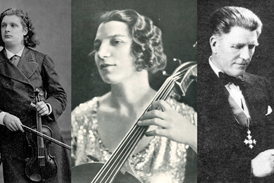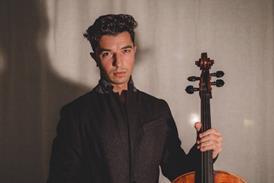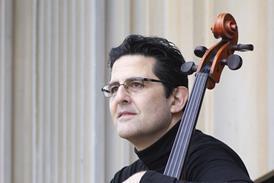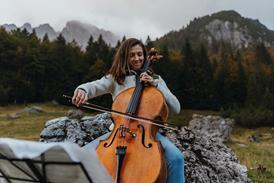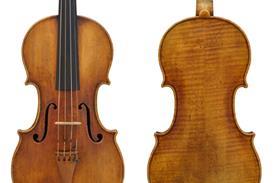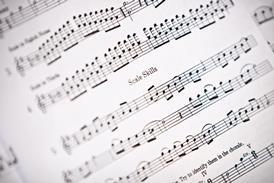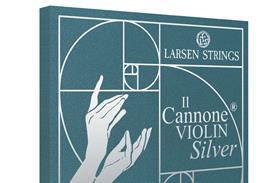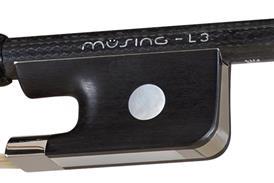All Lutherie articles – Page 3
-
 Premium ❘ Feature
Premium ❘ Feature‘An appearance of delicacy’ - Guarneri ‘del Gesù’ 1736 violin: Beauty from the Beast
Although Guarneri ‘del Gesù’ is best known for his wild, unruly later masterpieces, the 1736 ‘Cessole’, ‘Teja–Ferni’ violin reveals his softer side, as Carlo Chiesa explains
-
 Premium ❘ Feature
Premium ❘ Feature‘Makers have been working blind’ - Cremonese archings
Gareth Ballard presents a detailed method for analysing the various curves of archings
-
 Premium ❘ Feature
Premium ❘ FeatureCuriouser and curiouser: the 1672 ‘Gustav Mahler’ Stradivari viola
Was the 1672 ‘Mahler’ the first viola ever made by Antonio Stradivari? As Jonathan Marolle explains, this is just one of the unanswerable questions that arise when studying this fascinating instrument
-
 Premium ❘ Feature
Premium ❘ FeatureCT-Scanning the ‘Messiah’ Stradivari violin
In 2016 the ‘Messiah’ Stradivari was the subject of an extensive CT scanning project. Francesco Piasentini and Gregg Alf examine the resulting data, discovering repair work in the neck, and attempt to determine how it had originally been set
-
 Premium ❘ Feature
Premium ❘ FeatureIn Focus: A 1756 baroque cello by Robert Duncan
David Rattray on the Scottish maker’s mid-18th-century baroque cello
-
 Premium ❘ Feature
Premium ❘ Feature‘The great artistry of history’s most important bow maker’ - François Xavier Tourte
Paul Childs compares and contrasts two very late violin bows by François Xavier Tourte
-
 Premium ❘ Feature
Premium ❘ FeatureFrançois Nicolas Voirin: The style and substance of a pivotal bow maker
Matt Wehling on Voirin’s artistic and technical advances, which were implemented by most all French makers and paved the way for makers such as Lamy, Sartory and E.A. Ouchard
-
 Premium ❘ Feature
Premium ❘ FeatureThe Viennese double bass: The long pattern
In the 18th and 19th centuries, double basses made in Vienna had distinctive shapes and characteristics that gave them tremendous sound quality.
-
 Premium ❘ Feature
Premium ❘ FeatureInternational lutherie schools: All round learning
Peter Somerford speaks to teachers from seven violin making schools to find out the options for young aspiring luthiers
-
 Premium ❘ Feature
Premium ❘ Feature‘Interventions led to an almost total removal or retouching of the original materials’ - Comparing three 1734 Guarneris
Giacomo Fiocco explains the technical methods used to analyse a trio of 1734 Guarneris
-
 Premium ❘ Feature
Premium ❘ FeatureFrançois-Nicolas Voirin: The Second Tourte
The bows of François-Nicolas Voirin had more influence than those of any other bow maker after F.X. Tourte. In the first of two articles, Matt Wehling explores Voirin’s life and career, and examines why his bows were so successful with players
-
 Premium ❘ Feature
Premium ❘ FeatureG.B Guadagnini’s 1773 ‘Cozio’ viola: The only constant is change
The commercial relationship between G.B. Guadagnini and Count Cozio di Salabue allowed the luthier greater freedom to experiment. Alberto Giordano and Barthelemy Garnier examine a 1773 viola to show how the 62-year-old maker continued to adopt new methods and ways of working in this period
-
 Premium ❘ Feature
Premium ❘ FeatureViolin making in Seoul: Gangnam style
Over the past decade, a wide community of violin and bow makers has grown up in the Seocho district of Seoul. Luthier Hagit Gili Gluska speaks to colleagues young and old, both local and from overseas, who have made this area their home
-
 Premium ❘ Feature
Premium ❘ FeatureSchroetter and Roth: Two of a kind
With the demand for mass-produced German instruments skyrocketing in the 1920s, enterprising makers sent family members to America to represent them. Clifford Hall explores the careers and legacies of Andrew Schroetter and Heinrich Roth
-
 Premium ❘ Feature
Premium ❘ FeatureEarly lutherie experience: The journeyman years
The time spent between finishing at violin making school and striking out on your own can be critical to a luthier’s learning experience. Peter Somerford finds out what makers should expect from their first jobs in a workshop – and how they can make the most of their time
-
 Focus
FocusVuillaume’s ‘Alard’ bows: Small but beautiful
In the extensive literature concerning Jean-Baptiste Vuillaume, there is very little about one of his more remarkable innovations: a refinement of the bow frog design that can be seen on many examples from his workshop. Michel Samson explains how the so-called ‘Alard’ bow was designed to make life easier for ...
-
 Premium ❘ Feature
Premium ❘ FeatureWood treatment: The magic touch
New research has revealed how Stradivari, Amati and Guarneri ‘del Gesù’ all used tonewood that had been heavily treated with chemicals prior to carving. Wenjie Cai and Hwan-Ching Tai explain the study’s findings, and suggest it could indicate that the Cremonese makers were influenced by the contemporary alchemical beliefs
-
 Premium ❘ Feature
Premium ❘ FeatureBay Area bow makers: Bows on the bay
With a large and growing music community, the San Francisco Bay Area became a hotbed of violin and bow making talent in the early 20th century. Raphael Gold tells the stories of the most prominent bow makers of the day
-
 Premium ❘ Feature
Premium ❘ FeatureHistorical varnishes: Beneath the surface
The inclusion of minerals in Italian varnishes from the 16th to mid-18th centuries has long been a source of speculation. Balthazar Soulier, Stefan Zumbühl and Christophe Zindel present the first results of a long-term study showing that key answers can be found in early German recipes
-
 Premium ❘ Feature
Premium ❘ FeatureViolin making and AI: Intelligent design
The science of violin acoustics has encompassed 3D scanning, CNC technology and good old-fashioned tap tones – so why not AI software? Sebastian Gonzalez presents the results of a project that could help predict an instrument’s tone qualities even before it’s made



